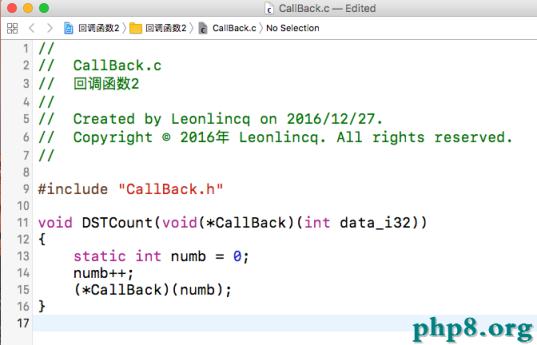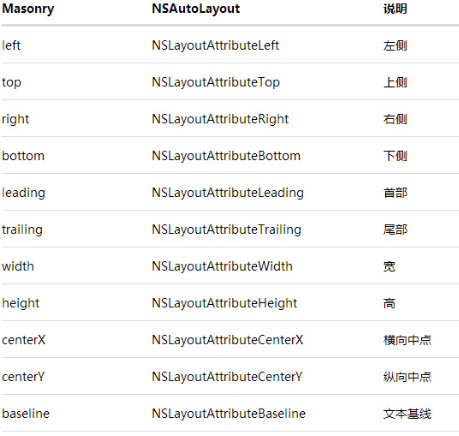iOS用戶點擊事件處理
處理機制
iOS事件處理,首先應該是找到能處理點擊事件的視圖,然後在找到的這個視圖裡處理這個點擊事件。
處理原理如下:
• 當用戶點擊屏幕時,會產生一個觸摸事件,系統會將該事件加入到一個由UIApplication管理的事件隊列中
• UIApplication會從事件隊列中取出最前面的事件進行分發以便處理,通常,先發送事件給應用程序的主窗口(UIWindow)
• 主窗口會調用hitTest:withEvent:方法在視圖(UIView)層次結構中找到一個最合適的UIView來處理觸摸事件
(hitTest:withEvent:其實是UIView的一個方法,UIWindow繼承自UIView,因此主窗口UIWindow也是屬於視圖的一種)
• hitTest:withEvent:方法大致處理流程是這樣的:
首先調用當前視圖的pointInside:withEvent:方法判斷觸摸點是否在當前視圖內:
? 若pointInside:withEvent:方法返回NO,說明觸摸點不在當前視圖內,則當前視圖的hitTest:withEvent:返回nil
? 若pointInside:withEvent:方法返回YES,說明觸摸點在當前視圖內,則遍歷當前視圖的所有子視圖(subviews),調用子視圖的hitTest:withEvent:方法重復前面的步驟,子視圖的遍歷順序是從top到bottom,即從subviews數組的末尾向前遍歷,直到有子視圖的hitTest:withEvent:方法返回非空對象或者全部子視圖遍歷完畢:
? 若第一次有子視圖的hitTest:withEvent:方法返回非空對象,則當前視圖的hitTest:withEvent:方法就返回此對象,處理結束
? 若所有子視圖的hitTest:withEvent:方法都返回nil,則當前視圖的hitTest:withEvent:方法返回當前視圖自身(self)
• 最終,這個觸摸事件交給主窗口的hitTest:withEvent:方法返回的視圖對象去處理。我的微信號iOS開發:iOSDevTip
案列分析
在UIViewController的self.view上加載一個LGFirstView
LGFirstView上面有一個UIButton我們叫它buttonFirst
然後,self.view上加載一個LGSecondView,剛好蓋在LGFirstView上面
LGSecondView上面也有一個UIButton我們叫它buttonSecond
正常情況下:
用戶點擊LGSecondView(點擊的點不在buttonSecond上,但是在buttonFirst撒很難過嗎),事件處理流程如下:
1)調用UIWindow的hitTest:withEvent:方法,hitTest:withEvent:方法會調用pointInside:withEvent:方法。此時pointInside:withEvent:返回YES,說明觸摸事件在UIWindow上面。
2)去遍歷UIWindow上面的子視圖,也就是self.view。同樣也是調用self.view的hitTest:withEvent:方法,hitTest:withEvent:方法會調用pointInside:withEvent:方法。此時pointInside:withEvent:返回YES,說明觸摸事件在self.view上面。
3)去遍歷self.view上的子視圖,也就是LGFirstView和LGSecondView。(注意:子視圖的遍歷順序是從top到bottom,即從subviews數組的末尾向前遍歷)。
4)所以先調用LGSecondView的hitTest:withEvent:方法,hitTest:withEvent:方法會調用pointInside:withEvent:方法。此時pointInside:withEvent:返回YES,說明觸摸事件在LGSecondView上面。(此時不會再去遍歷LGFirstView,所以正如你所願buttonFirst的點擊事件也不會被調用)
5)還沒有結束,接著回去遍歷LGSecondView上的所有子視圖,結果所有子視圖的hitTest:withEvent:方法都返回nil,因為LGSecondView上面只有secondButton,而點擊的點不在secondButton。
6)最終hitTest:withEvent:方法返回當前視圖自身(self),而LGSecondView沒有事件要處理。整個過程結束。
如果我們想讓buttonFirst也響應點擊事件怎麼辦?
方法一:
我們在LGSecondView加入如下代碼:
#pragma mark - 方法一
-(id)hitTest:(CGPoint)point withEvent:(UIEvent *)event
{
UIView *hitView = [super hitTest:point withEvent:event];
if (hitView == self)
{
return nil;
}
else
{
return hitView;
}
}
我們再來分析一下:
還是這個場景,用戶點擊LGSecondView(點擊的點不在buttonSecond上,但是在buttonFirst撒很難過嗎),事件處理流程如下:
1)調用UIWindow的hitTest:withEvent:方法,hitTest:withEvent:方法會調用pointInside:withEvent:方法。此時pointInside:withEvent:返回YES,說明觸摸事件在UIWindow上面。
2)去遍歷UIWindow上面的子視圖,也就是self.view。同樣也是調用self.view的hitTest:withEvent:方法,hitTest:withEvent:方法會調用pointInside:withEvent:方法。此時pointInside:withEvent:返回YES,說明觸摸事件在self.view上面。
3)去遍歷self.view上的子視圖,也就是LGFirstView和LGSecondView。(注意:子視圖的遍歷順序是從top到bottom,即從subviews數組的末尾向前遍歷)。
4)所以先調用LGSecondView的hitTest:withEvent:方法,hitTest:withEvent:方法會調用pointInside:withEvent:方法。此時pointInside:withEvent:返回YES,說明觸摸事件在LGSecondView上面。
5)但是,注意了,這裡有個但是, UIView *hitView = [super hitTest:point withEvent:event];就是這句代碼發揮了作用。如果hitView是LGSecondView的話,就不處理點擊事件。(這跟userInteractionEnabled=NO是不一樣的,userInteractionEnabled=NO,LGSecondView上的buttonSecond也不會響應點擊事件了。)
6)這個時候會去調用LGFirstView的hitTest:withEvent:方法,hitTest:withEvent:方法會調用pointInside:withEvent:方法。此時pointInside:withEvent:返回YES,說明觸摸事件在LGFirstView上面。
7)再去遍歷LGFirstView上面的子視圖,也就是buttonFirst,調用buttonFirst的hitTest:withEvent:方法,hitTest:withEvent:方法會調用pointInside:withEvent:方法。此時pointInside:withEvent:返回YES,說明觸摸事件在buttonFirst上面。
8)再去遍歷buttonFirst上的所有子視圖,結果所有子視圖的hitTest:withEvent:方法都返回nil,說明點擊就在buttonFirst,buttonFirst就用響應的點擊方法。
方法二
在LGSecondView.m
@interface LGSecondView ()@property (nonatomic, strong) NSMutableArray *subControlsArray;
@end
@implementation LGSecondView
- (id)initWithFrame:(CGRect)frame
{
if (self = [super initWithFrame:frame]) {
self.subControlsArray = [NSMutableArray array];
}
return self;
}
#pragma mark - 方法二
- (void)addSubview:(UIView *)view{
[super addSubview:view];
if ([view isKindOfClass:[UIControl class]]) {
[self.subControlsArray addObject:view];
}
}
//set self not response action and self subviews response action
- (BOOL)pointInside:(CGPoint)point withEvent:(UIEvent *)event;
{
BOOL toNext = YES;
for (UIView *view in _subControlsArray) {
if (CGRectContainsPoint(view.frame, point)) {
toNext = NO;
break;
}
}
return !toNext;
}
具體原理就不在累述了,大家自己推一下,也可以把你的思路寫下來發給我。
還有很多方法也歡迎你把思路寫下來發給我。我的微信號iOS開發:iOSDevTip




